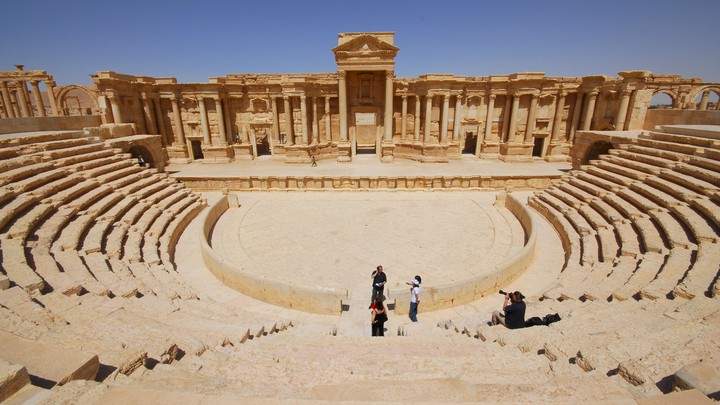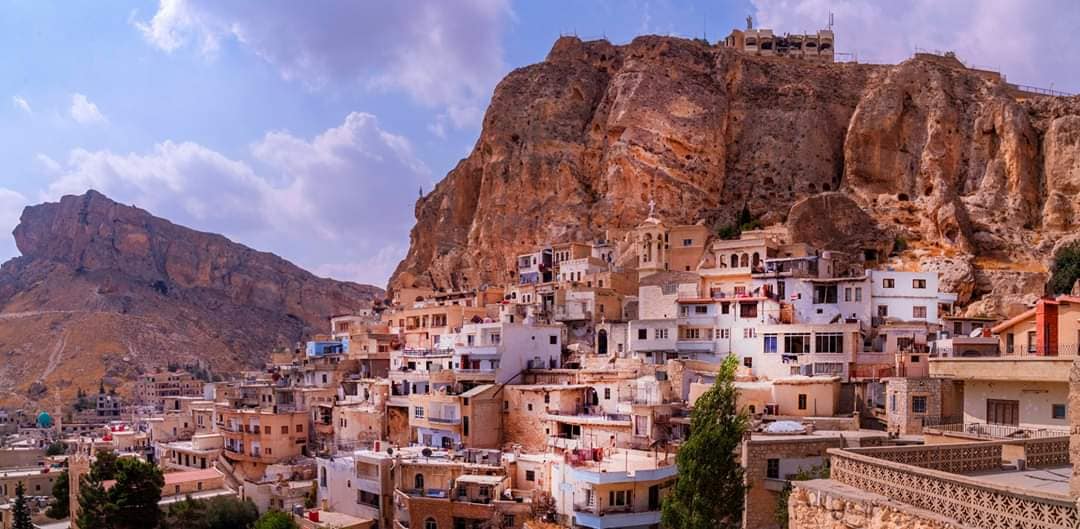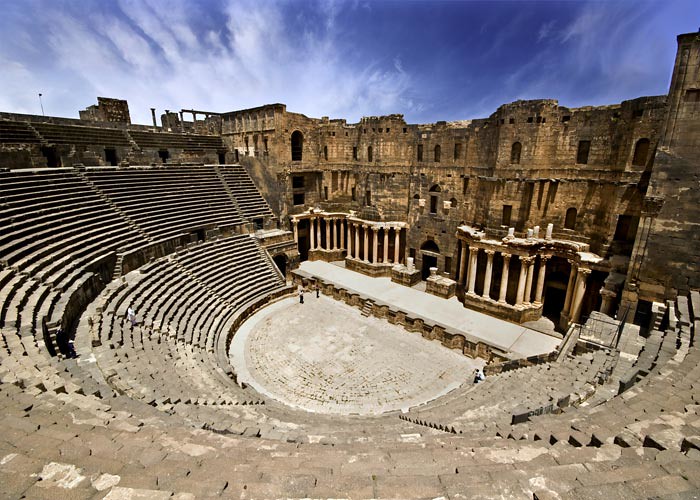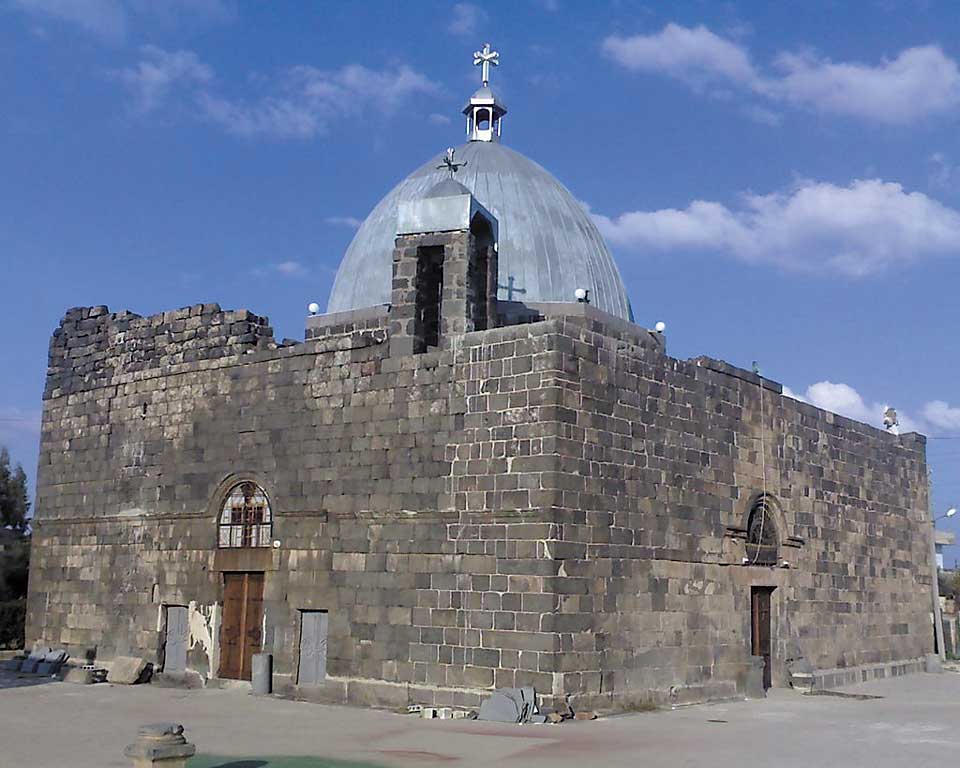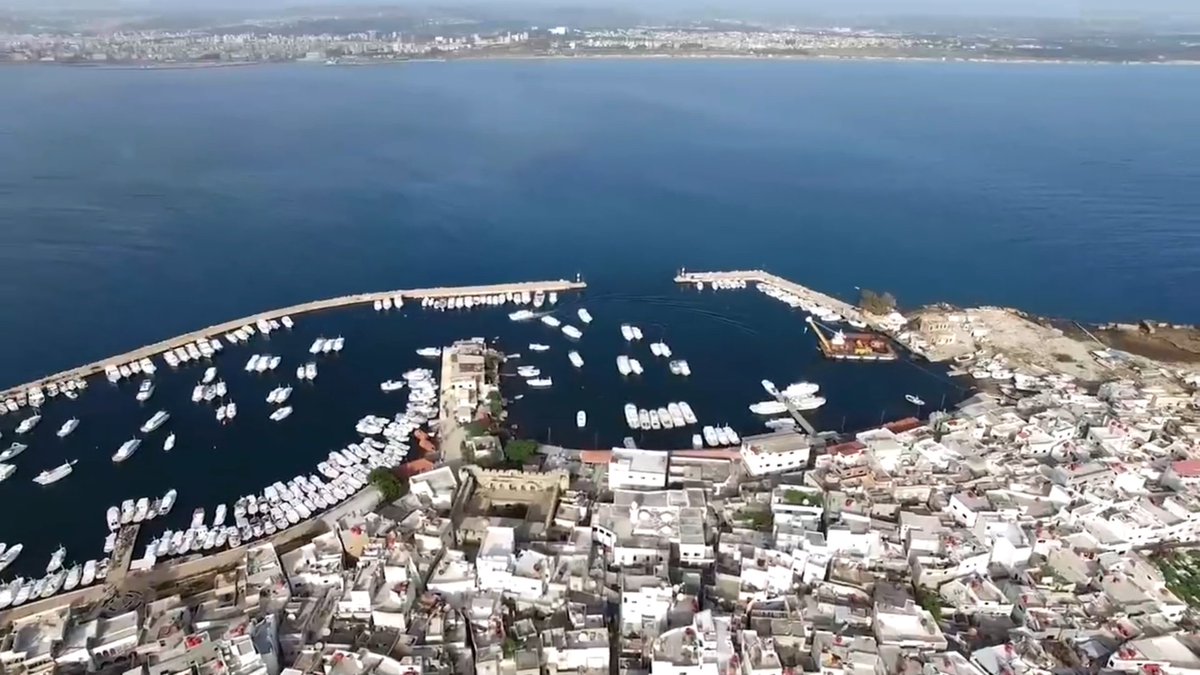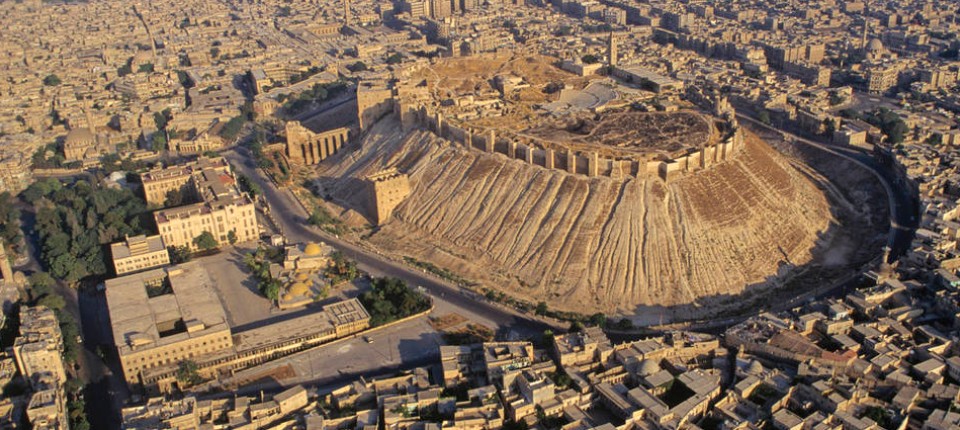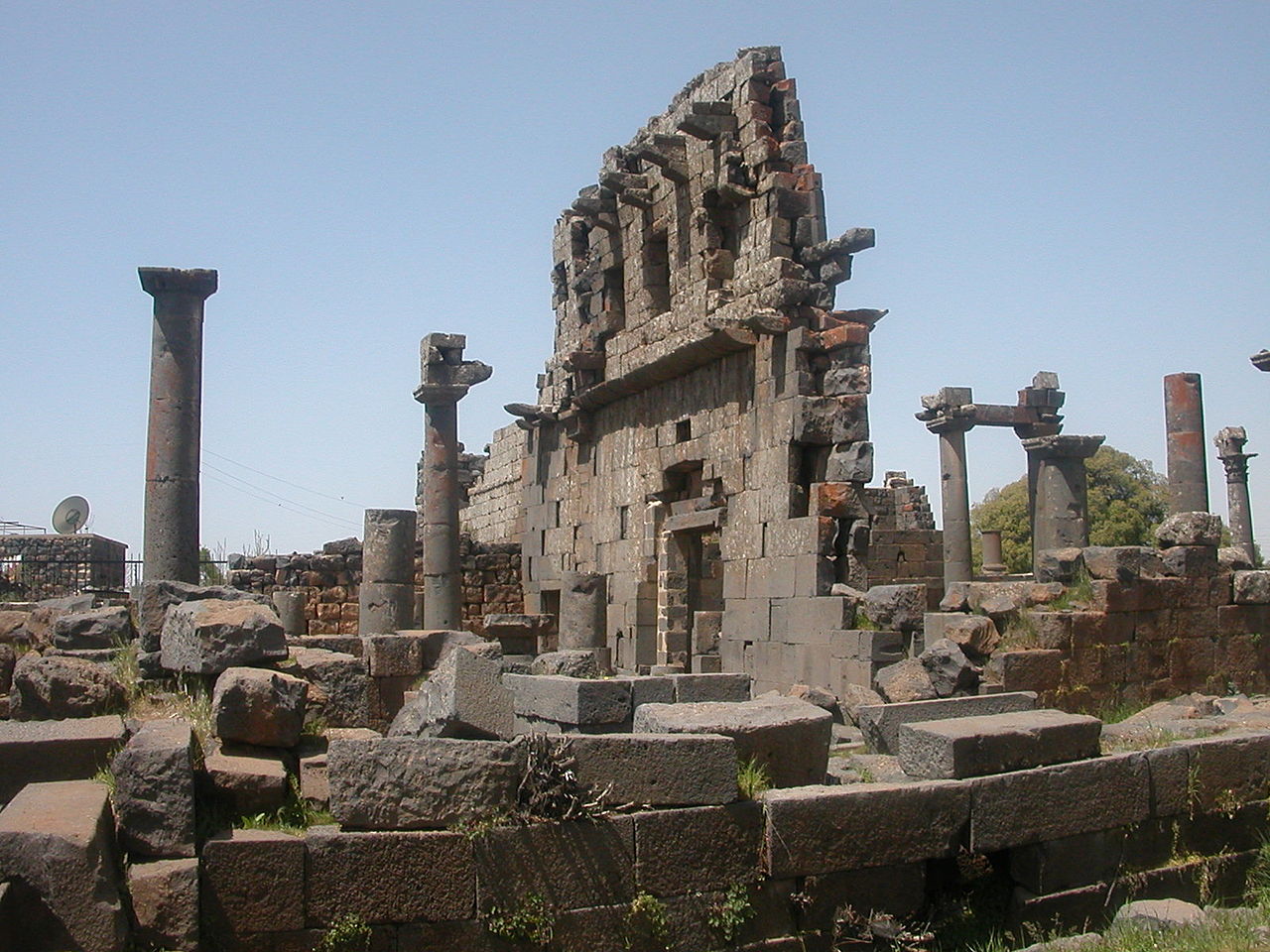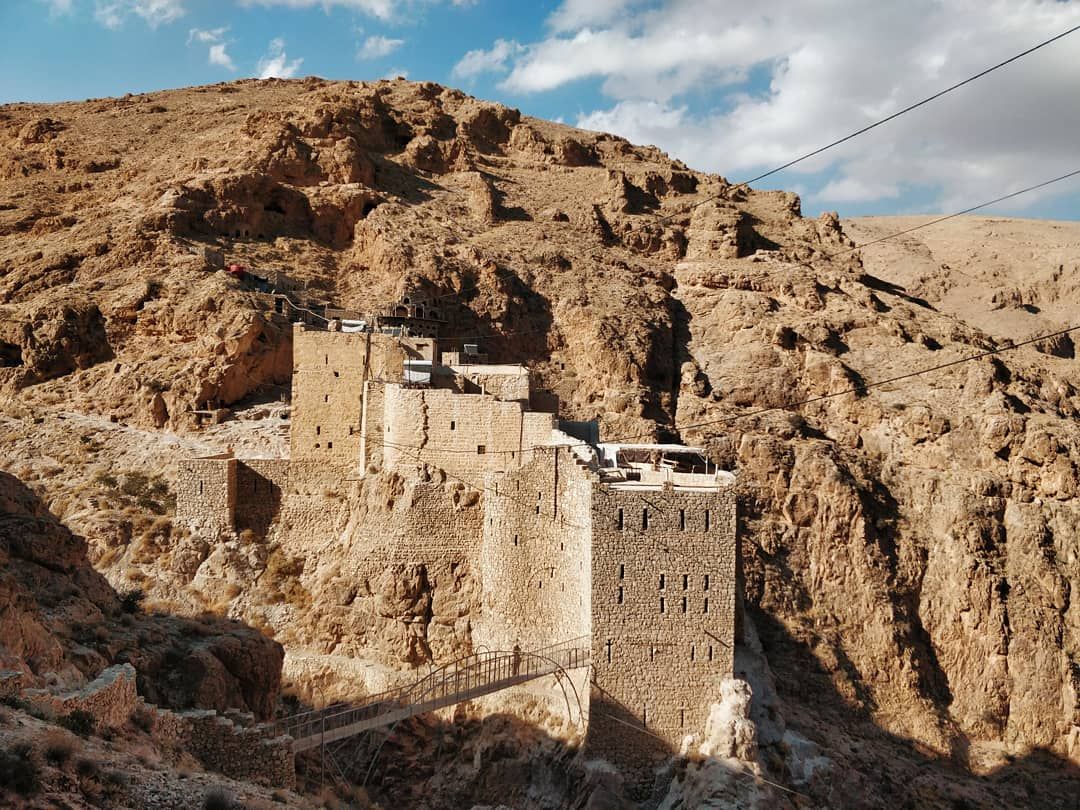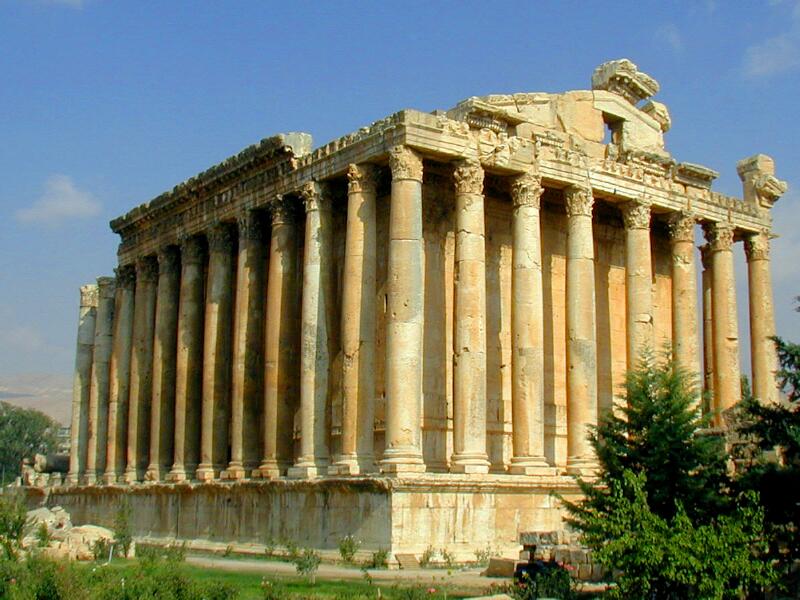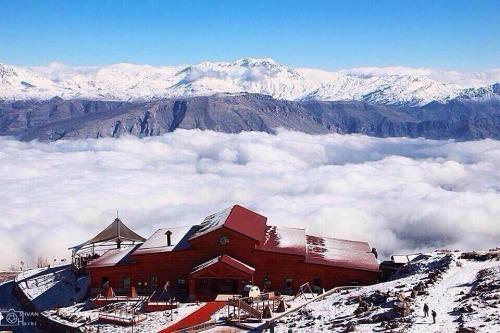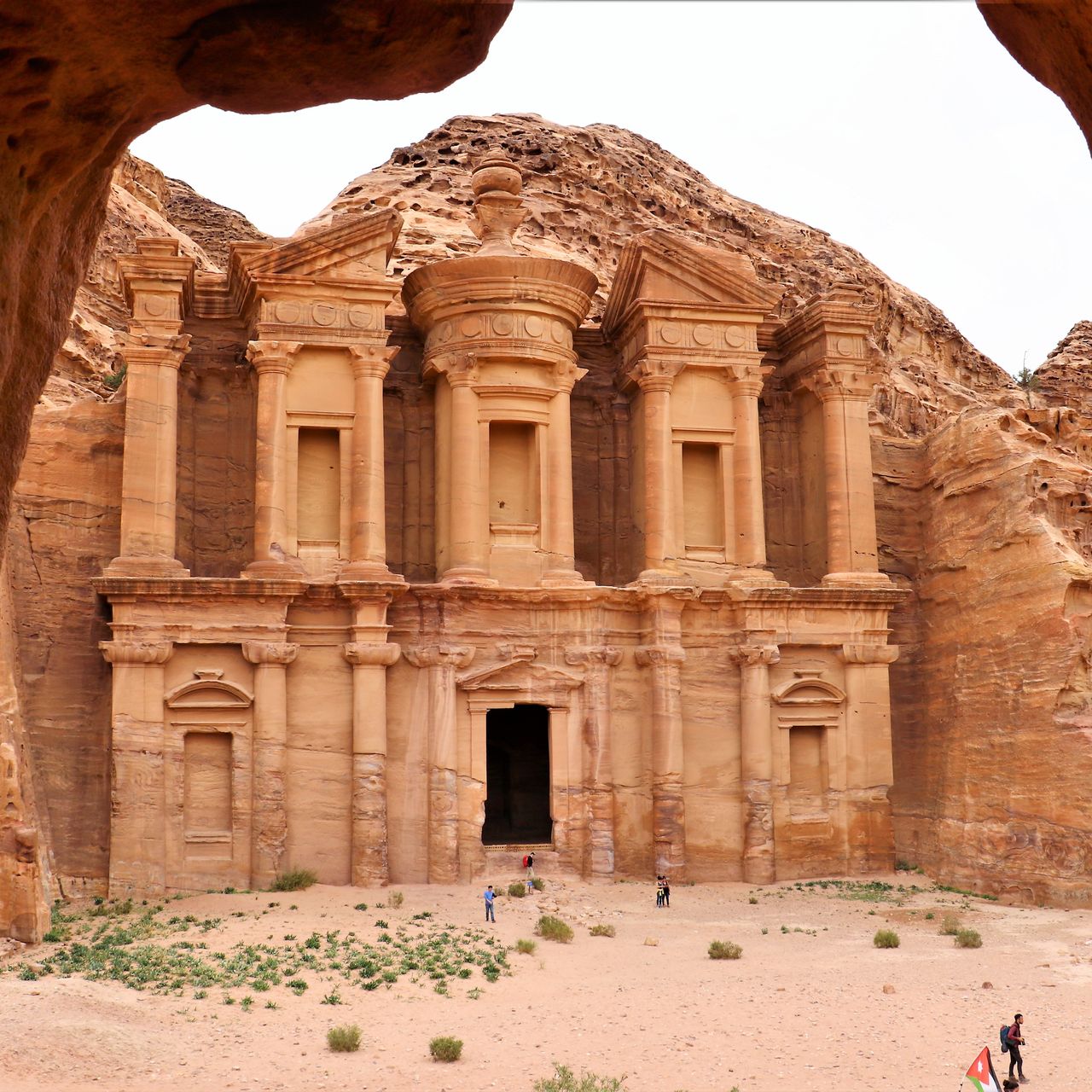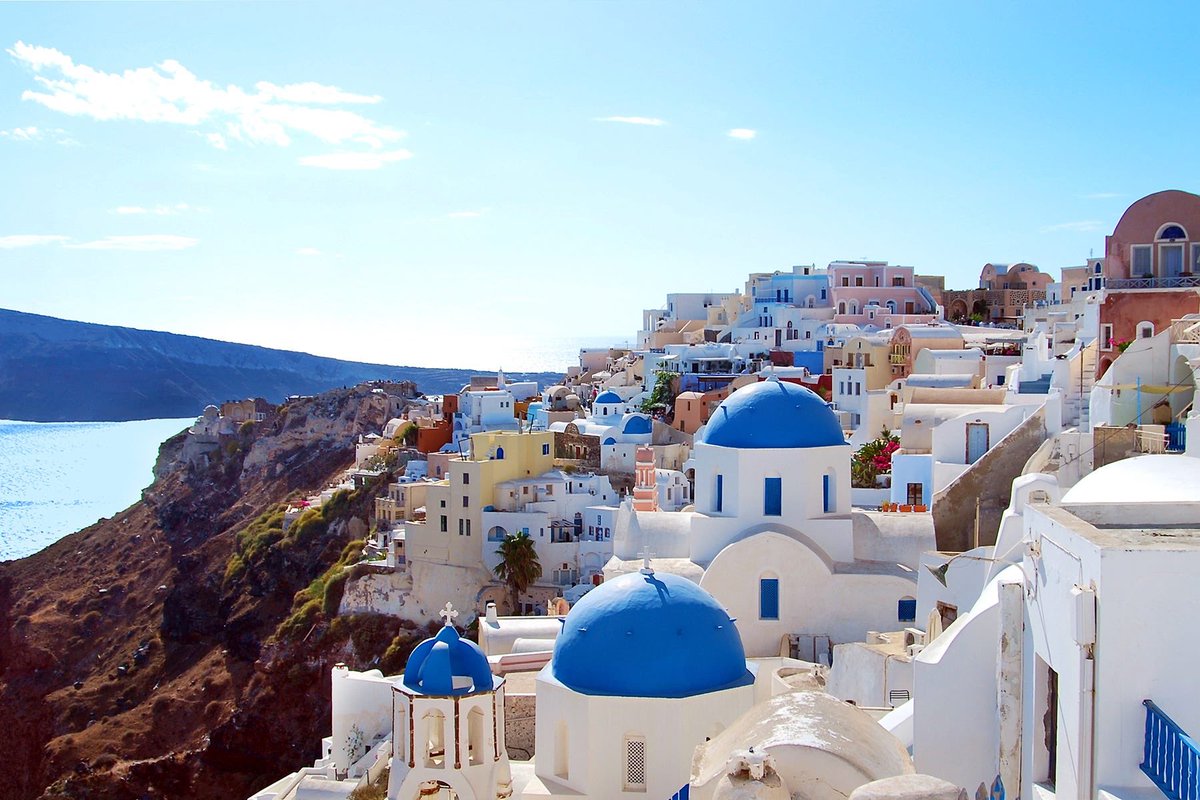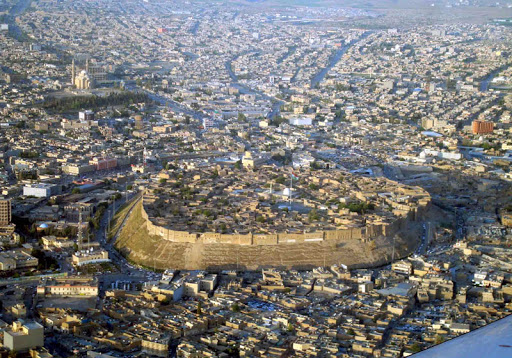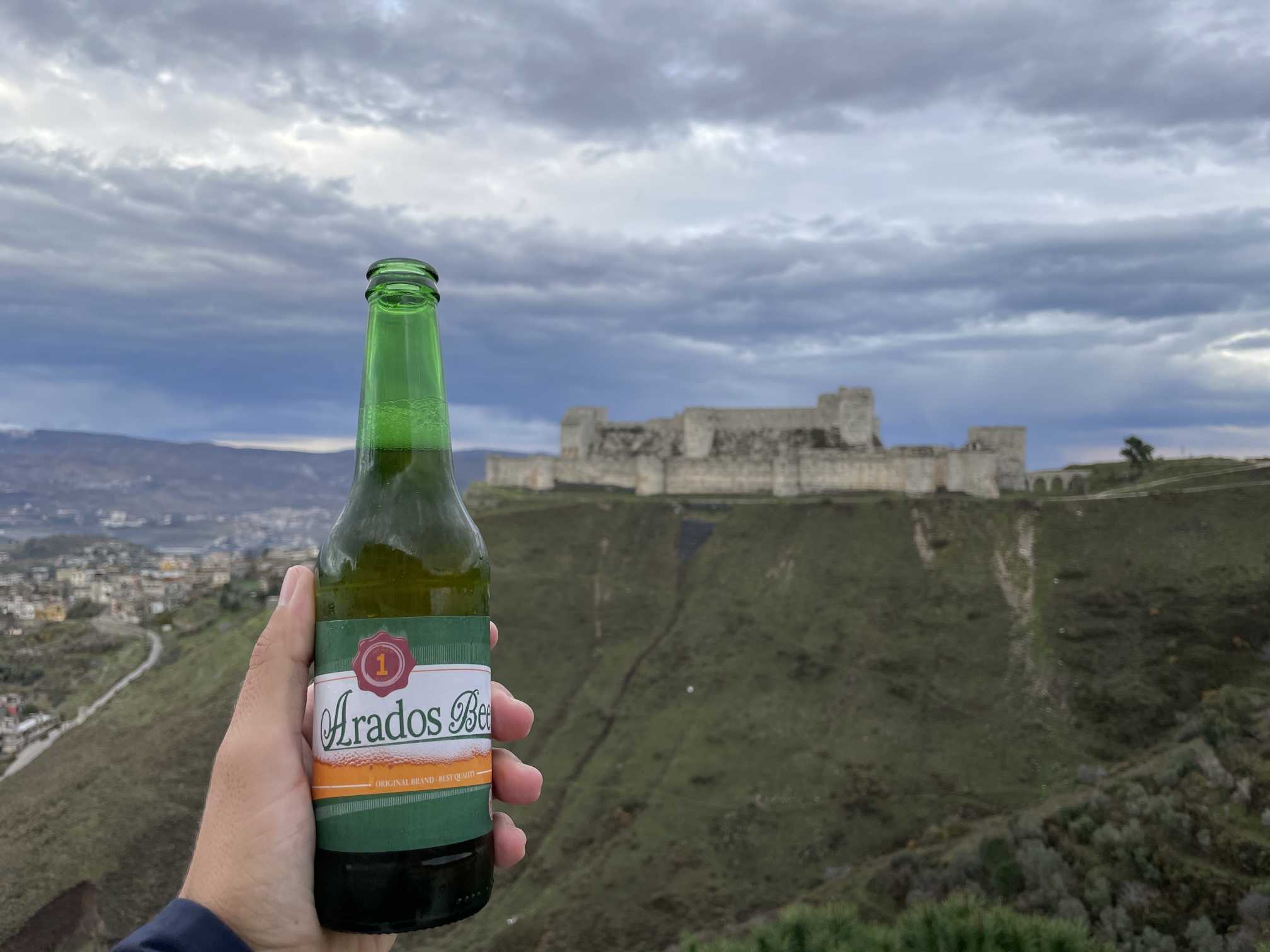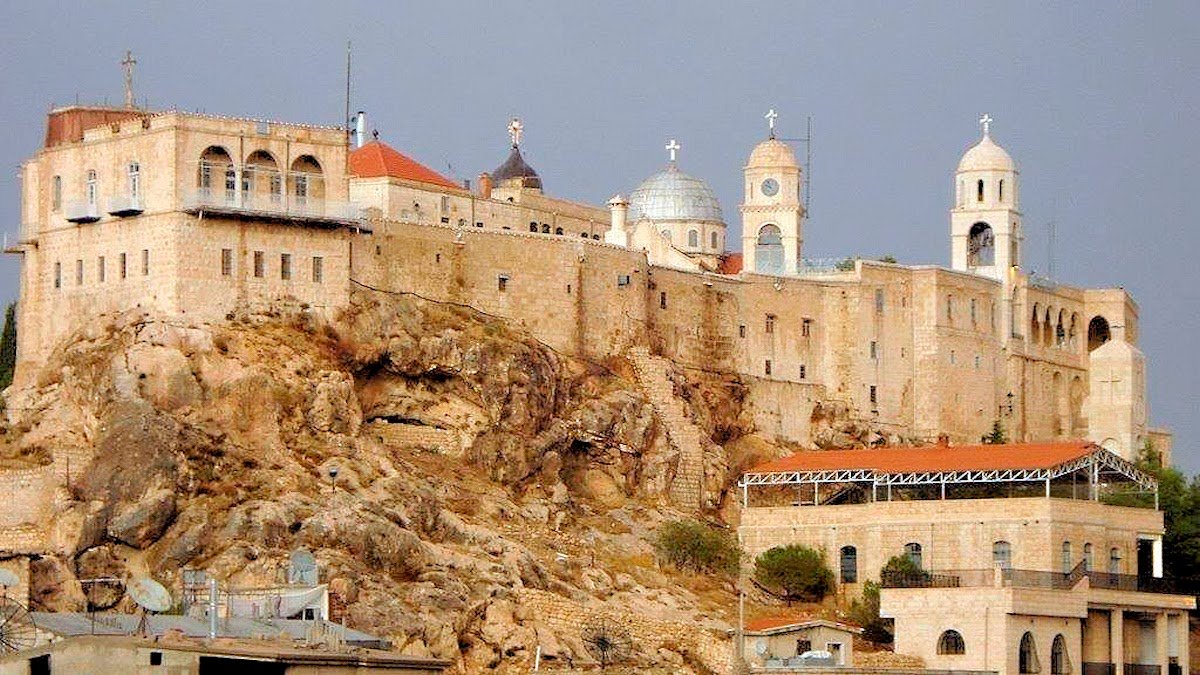
Saydnaya
It is a city located in the mountains, 1,500 m (4,900 ft.) above sea level, 27 km (17 mi) north of the city of Damascus in Syria. It is the home of a Greek Orthodox monastery traditionally held to have been founded by Byzantine emperor Justinian I, and where a renowned icon of the Virgin Mary is revered by both Christians and Muslims to this day. The town is noted for the large number of Aramaic speakers, along with nearby Maaloula and few smaller towns nearby.
The Lady Virgin Monastery story said that Justinian I, Emperor of Byzantium, while crossing Syria with his troops either on his way to the Holy Land or on a campaign against the Persians, came to this desert, where his army encamped and soon suffered thirst for lack of water. When they despaired, the emperor saw a beautiful deer off in the distance. He vigorously gave chase, hunting the animal until it tired and stopped on a rocky knoll and approached a spring of fresh water, but without giving the emperor the opportunity to shoot it. Suddenly, it transformed into an icon of the Theotokos. Which shone with a brilliant light. A white hand stretched forth from it and a voice said, "No, thou shalt not kill me, Justinian, but thou shalt build a church for me here on this hill." Then the strange heavenly light and majestic figure disappeared. Upon his return, Justinian related what he had seen to his subordinates and ordered them immediately to draw up a plan for the contemplated church. After some time had passed and the architects were unable to resolve the problems of the plan, the Holy Virgin — the deer — reappeared to Justinian in a dream and confided a magnificent plan to him for a convent, of which she would be the Protectors. It is said that the basic structure of the convent follows this plan to this day. The convent soon gained such renown that it came to be ranked second only to Jerusalem as a place of pilgrimage, and nuns from every corner of Syria, Egypt, and other lands flocked to it. The holy Icon El Chagoura appeared many years after the convent was constructed.
Another important part in Saydnaya is the statue of Christ in Cherubim Monastery, which considered the second largest statue after the Christ statue in Rio de Janeiro.



